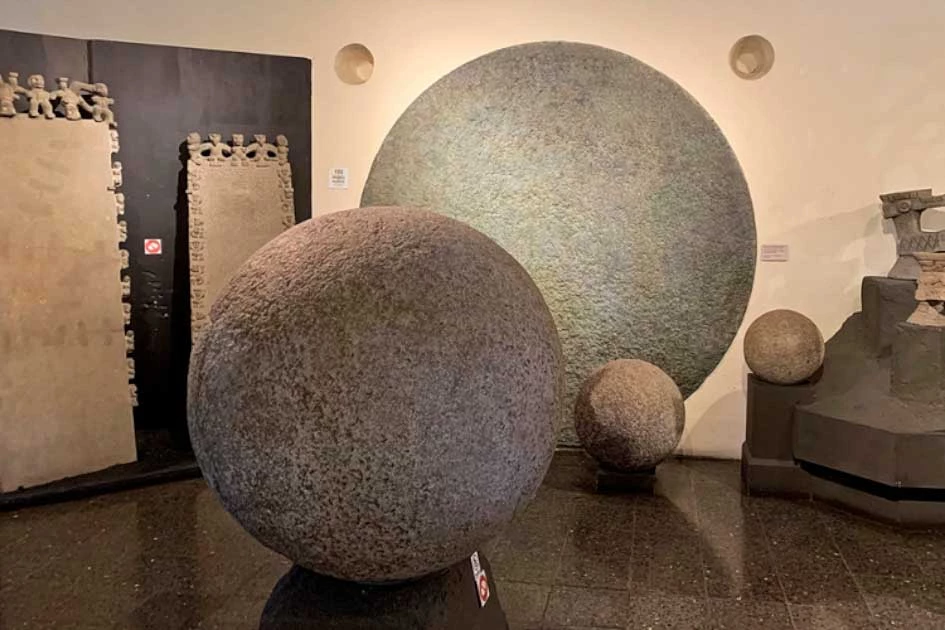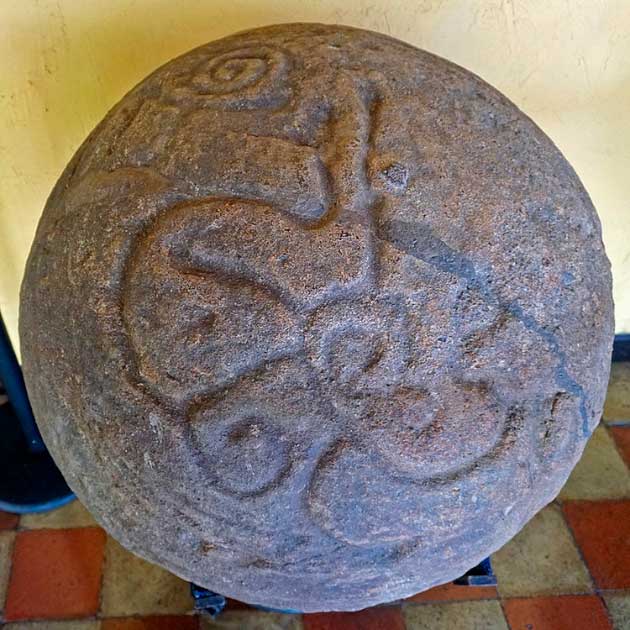When asked to picture Costa Rica, most would conjure an image of pristine beaches, tropical rainforests, and lush green jungles teeming with exotic birds and butterflies. While the “rich coast” certainly lives up to its reputation, there are mysteries in the jungle, too.
Probably most prominently among such mysteries, are the huge spheres that dot the landscape of the southern portion of the country. Made of stone and up to 15 tons (13.6 tonnes) in weight, these sculptures have been carved exactingly into near-perfect spheres, only to be left scattered amongst the trees.
But the real question is, what are these stone spheres of Costa Rica? Who built them, and for what purpose?
The Diquis Delta
The mysterious stone spheres of Costa Rica are a group of more than 300 “petrospheres” present in Costa Rica on Isla del Cano and in the Diquis Delta region. Locally, the stones are known as “bolas de piedra”, literally “stone balls” and it would seem the locals are as perplexed as everyone else.
There are a lot of myths surrounding the strange stone spheres. While some believe the stones were brought to Earth by aliens, others are of the view that they have a connection with the lost continent of Atlantis.

On a more grounded level and on the basis of the artifacts found near the stone spheres, it is believed that the stones were built between 800 and 1500 AD. Most likely, the Costa Rica spheres were created by the native people of the indigenous tribal groups who used to live there at the time of the Spanish conquest.
Some believe that the stone was created by the Chorotega speaking peoples, who had lived in the Mesoamerican region encompassing Costa Rica, Nicaragua and Honduras for millennia. However, who actually crafted the round stones is still a mystery to this day.
Discovery of the Spheres
In the early 1930s, the United Fruit Company began its search for a new land in order to plant new banana trees. As their plantations on Costa Rica’s eastern side were threatened by disease, a new area for plantations was needed to ensure future crops were not lost.
Far away from the Atlantic Ocean, on the western coastline of the country, the United Fruit Company was able to find appropriate land in the Diquis Valley. While clearing the land for plantation purposes, the workers of the company came across the strange stone balls.
- Plain of Jars: Ancient Mortuary Vessels and Cemeteries
- Moeraki Boulders – Spheres of Nature in Otago, New Zealand
One of the most astonishing things about the stones was that they seemed to be perfectly round in shape and had a smooth surface. However, the United Fruit Company was more concerned about getting rid of the stones as they were coming in their way of the plantation.
The stones were pushed to the sides either with the use of bulldozers or by rolling them. Many of the stones were also transported and used as lawn ornaments in homes and businesses.
The Investigation
The very first investigation of the Costa Rica spheres was conducted by Doris Stone, the daughter of an executive at the United Fruit Company. Later, she became the director of the National Museum of Costa Rica.
The observations made by her were published in American Antiquity magazine in 1943. Five years later in 1948, Samuel Lothrop, an American archaeologist, was on an expedition to Costa Rica. There he met Stone, who described to him the strange stone balls she had found in Costa Rica. Lothrop decided to visit the Diquis Valley and conduct an examination of the petrospheres.
According to the majority of mainstream archaeologists, the stone spheres are manmade and may have been created by the ancient indigenous people. However, there exist some wild stories that state the stone had a connection with aliens or Atlantis’ lost continents.
The perfectly round shape of the stones is one of the most mysterious aspects. While there are various other stones that may be round, none of them are as round as the strange stones in Costa Rica.
Clues to Their Purpose
The Costa Rica spheres vary in size. They range from a few centimeters (1”) to more than 2 meters (7 feet) in diameter, weighing what you might expect such stones to weigh. There are different speculations relating to the creation of the stone spheres.
Some believe that they were naturally formed by erosion in a river bed, although for such natural erosive actions to produce perfect spheres is seen as highly unlikely. However, as per the most popular theory, the stone was crafted by the ancient peoples who lived here.
- Kukaniloko: Why did Hawaiian Royalty come here to Give Birth?
- The Sky Fortress Of Kuelap And Cliffside Mummies Of The Chachapoyas
Most of the stone spheres have been sculpted from gabbro, which is a coarse-grained equivalent of basalt. However, there are many stones that are crafted from shell-rich limestone and others from sandstone.
According to John Hoopes, an archaeologist at the University of Kansas, the stone balls are most likely crafted by hammering round boulders, slowly and carefully forming them into spherical shapes. In order to give the stones the spherical shape, techniques such as pecking, grinding, and controlled fracture might have been used.
The stones seem to be polished with sand at last, to give them as smooth as finish as possible. The degree of precision and finishing of the stones in Costa Rica does vary, but they are generally very smooth, very uniform and very large.

When it comes to the purpose of the Costa Rica spheres, this is quite uncertain. The exact purpose is not known. There are only speculations relating to the potential use of the strange stones in Costa Rica.
One of the popular speculations is that the stones may have been used for making astronomical observations, or as compasses. Many archaeologists even believe that the round stones could be a representation of the solar system.
Another famous theory relating to the mysterious stones is that they could be used as a symbol of status by people of that time. According to John Hoopes, the stone balls may have been placed in front of the houses of eminent people.
It could be a sign of esoteric knowledge, control over labor, and power. According to records, some of the strange stone spheres were placed on top of the molds. It might validate the theory that the stones in Costa Rica were used as a symbol of status.
Today, the strange balls can be found in different places and are placed in front of the homes of wealthy people in Costa Rica. The stones can also be found in the court yard of the Peabody Museum at Harvard University. So, ironically, even today, they are used to mark the properties of the powerful and rich people in Costa Rica and beyond.
Top Image: Stone Spheres at the Costa Rica National Museum. Source: Rodtico21 / CC BY-SA 3.0.
By Bipin Dimri